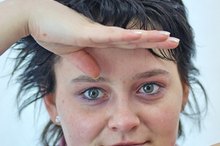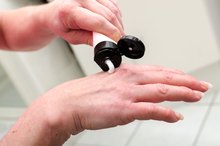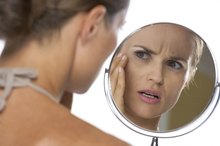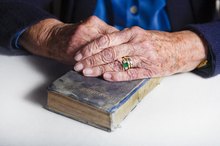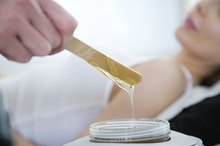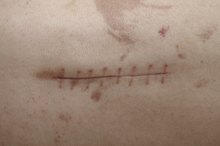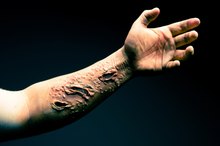What does fact checked mean?
At Healthfully, we strive to deliver objective content that is accurate and up-to-date. Our team periodically reviews articles in order to ensure content quality. The sources cited below consist of evidence from peer-reviewed journals, prominent medical organizations, academic associations, and government data.
The information contained on this site is for informational purposes only, and should not be used as a substitute for the advice of a professional health care provider. Please check with the appropriate physician regarding health questions and concerns. Although we strive to deliver accurate and up-to-date information, no guarantee to that effect is made.
How to Remove Hyperpigmentation Scars
Hyperpigmentation scars can be the result of many things. For instance, they tend to occur after a breakout of acne lesions or chicken pox. Once the initial lesion has healed, it can leave behind a dark spot on the skin, which may look like a scar 1. Thankfully, it's not a scar, but it can take up to a year to fade away on its own, which is why many people wish to remove hyperpigmentation scars using other means to speed up the process.
Use a SPF 30 sunscreen whenever you plan on going outside. This will protect your skin from the sun, but it also protects your hyperpigmentation scars. Hyperpigmentation marks will darken even more when exposed to the sun, so protecting yourself will speed up the treatment process. It will also protect you from any sun damage that could result from using lightening creams to get rid of these scars.
How to Get Rid of Acne Pock Marks
Learn More
Apply lemon juice to your hyperpigmentation scars a few times a week. With clean hands, apply lemon juice directly to your hyperpigmentation scars. Let the juice soak in and completely dry before rinsing your skin well.
Apply an over-the-counter cream to your hyperpigmentation scars. The main ingredient in these creams is usually hydroquinone, which is a bleaching ingredient. When applied to your hyperpigmentation scars regularly, it will slowly remove the pigment and help them match the surrounding skin.
How to Erase Skin Discoloration
Learn More
Apply prescription creams to your hyperpigmentation scars. Your dermatologist will likely prescribe a retinoid cream like tretinoin to treat your scars. Apply this cream after cleansing your face once per day. Use a small amount to cover your entire face. When applied diligently for several weeks, you should notice your hyperpigmentation scars start to fade.
Related Articles
References
- AcneNet: Skin Color Changes: Spots May Fade with Right Treatment
- MayoClinic.com: Age Spots (Liver Spots): Treatments and Drugs
- Fabbrocini, G, Annunziata, MC, D'Arco, V, et al. Acne scars: pathogenesis, classification and treatment. Dermatol Res Pract. 2010;2010:893080. doi:10.1155/2010/893080
- Kravvas G, Al-niaimi F. A systematic review of treatments for acne scarring. Part 1: Non-energy-based techniques. Scars Burn Heal. 2017;3:2059513117695312. doi:10.1177/2059513117695312
- Gozali MV, Zhou B. Effective treatments of atrophic acne scars. J Clin Aesthet Dermatol. 2015;8(5):33-40.
- Wollina U, Goldman A. Fillers for the improvement in acne scars. Clin Cosmet Investig Dermatol. 2015;8:493-9. doi:10.2147/CCID.S86478
- Kravvas G, Al-niaimi F. A systematic review of treatments for acne scarring. Part 2: Energy-based techniques. Scars Burn Heal. 2018;4:2059513118793420. doi:10.1177/2059513118793420
- Ogawa R. Keloid and hypertrophic scars are the result of chronic inflammation in the reticular dermis. Int J Mol Sci. 2017;18(3). doi:10.3390/ijms18030606
- Rabello FB, Souza CD, Farina júnior JA. Update on hypertrophic scar treatment. Clinics (Sao Paulo). 2014;69(8):565-73. doi:10.6061/clinics/2014(08)11
- França K, Keri J. Psychosocial impact of acne and postinflammatory hyperpigmentation. An Bras Dermatol. 2017;92(4):505-509. doi:10.1590/abd1806-4841.20175645
- Tosti, A, De Padova, MP, Beer, KR, eds. Acne Scars: Classification and Treatment. London: Informa UK Ltd.; 2010.
Writer Bio
Brenda Barron is a writer, editor and researcher based in Southern California. She has worked as a writer since 2004, with work appearing in online and print publications such as BabyZone, "Cat Fancy" and "ePregnancy." She holds a Bachelor of Arts in English literature from California State University, Long Beach.
